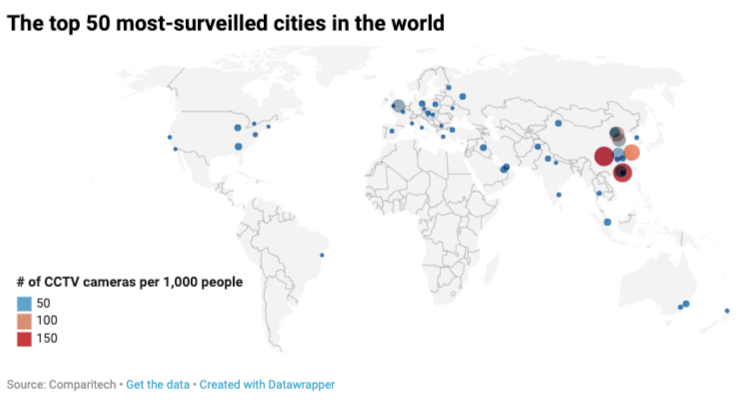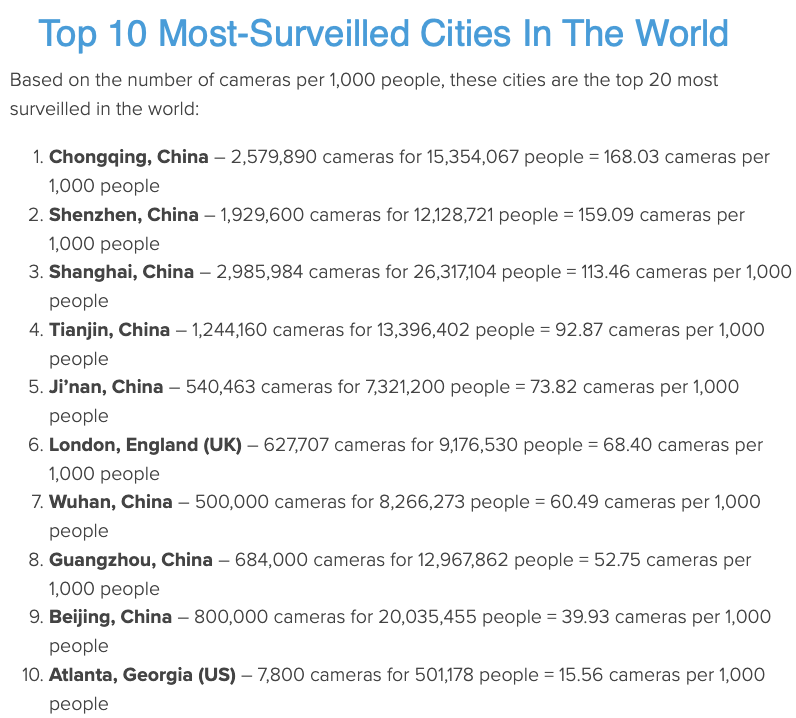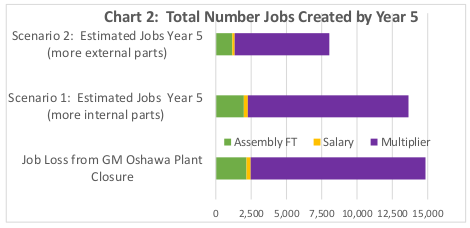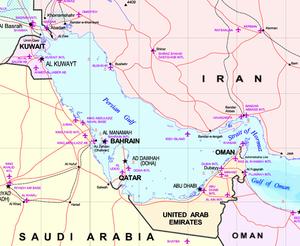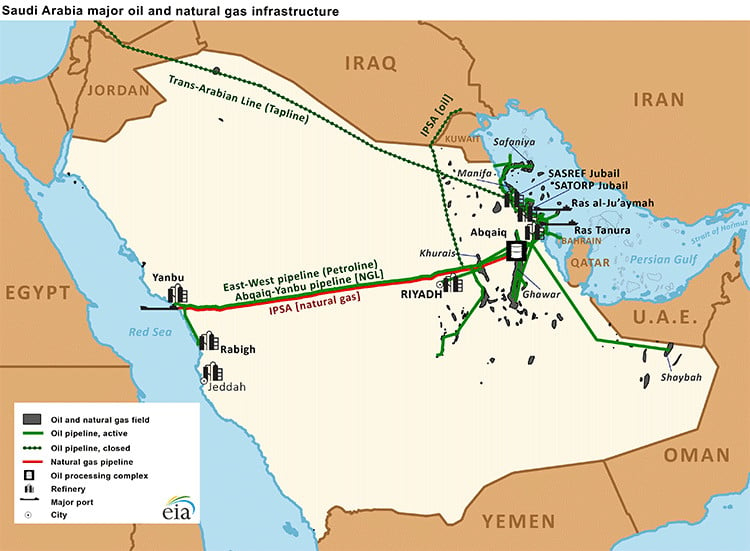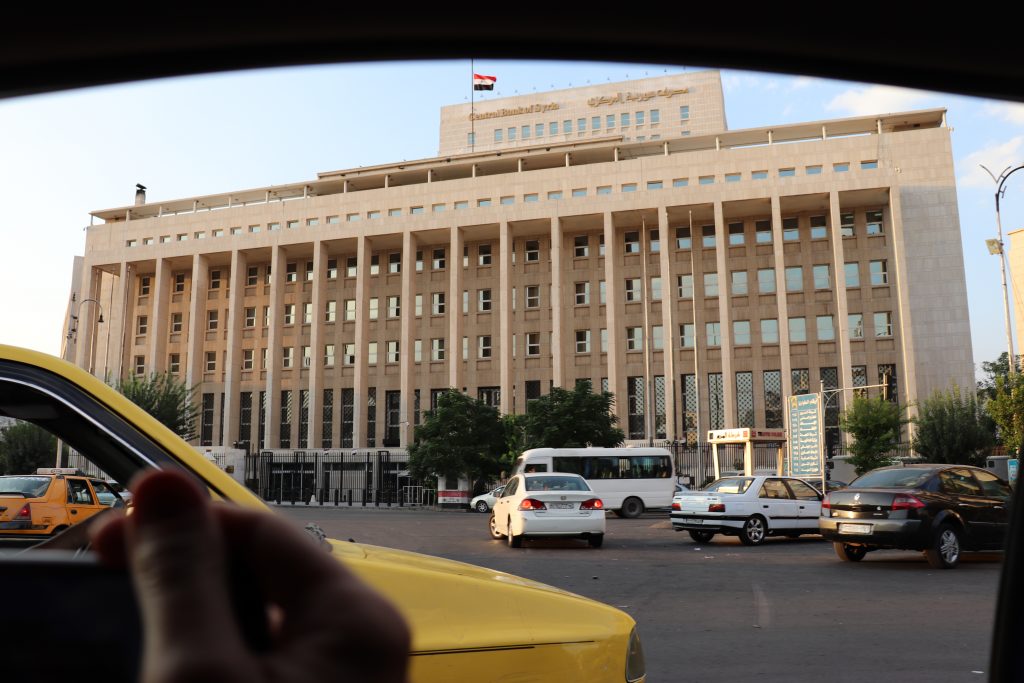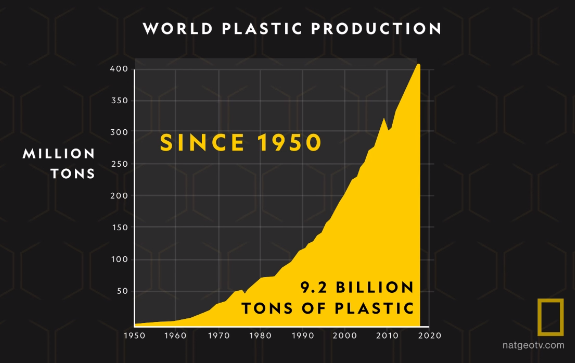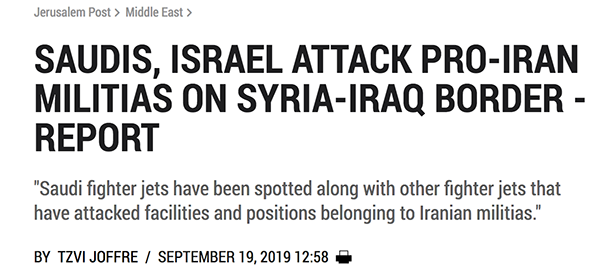First published in December 2015 in the month following the Paris terror attacks
The attacks in Paris on November 13, 2015, and in San Bernardino on December 4, 2015, have provided ample “justification” for authorities to ramp up “The War on Terror.” They were followed by draconian attacks on civil liberties in France. They have spurred escalated imperialist military intervention in the war-torn regions east of the Mediterranean Sea, particularly Syria and Iraq. The US government has moved to officially deploy its Special Operations Forces to “oversee” military assaults in that region by various armed groups. In addition, the intense US government-led bombing campaign launched in September 2014, allegedly aimed at ISIS targets, has been stepped up and has now been joined by the previously hesitant French and British governments.
The war hysteria has been galvanized to a fevered pitch: One particularly delirious hawkish presidential candidate – Ted Cruz – has even called for “carpet bombing” the Iraq-Syria region to destroy ISIS and “find out” if the “sand can glow,” according to the online magazine Politico on December 5, 2015.
The “War on Terror” was launched in 2001. Fourteen years and trillions of dollars later, it is alive and well, and so are the “terrorists.” Moreover, there is not the slightest doubt that these escalated military offensives will neither end the former nor destroy the latter. Meanwhile, the ghastly attacks by ISIS and other such groups provide abundant opportunities for the corporate-owned media and politicians to remind the world’s working-class of the urgency of “The War on Terror,” which Pentagon officials predict will last into the next generation.
Nor is there the slightest doubt, as the evidence below will show, that the US government has fabricated “The War on Terror” to meet US imperialism’s long-term geopolitical goals. The evidence will show that either directly or through its vassal states, the US government is responsible for organizing armed terrorist groups across Asia and has been doing so for decades, causing tens of millions of deaths and injuries. This policy has led to the destruction of Afghanistan, Iraq, Libya, Syria, and now Yemen, and has already been extended into Africa. (1)
These are not just “wars for oil,” as echoed in the popular refrain. There is much more involved than just oil – although oil is a part of it. The underlying purpose of this policy is clearly to promote a state of chaos that makes it easier to negate and preemptively remove any organized resistance to the unfettered exploitation of resources by the capitalist class, particularly the US capitalist class.
Furthermore, the ultimate aim – particularly as regards the regions of Asia and Europe – is undoubtedly to clear the way to finally retake for US imperialism and its allies, unlimited access to the resources removed from their reach during the last century by the proletarian revolutions in Russia (1917) and China (1949).
Who’s Helping?
The US imperialists are operating through the regimes in their flunky states in Pakistan and in the Persian Gulf region. The regimes in the Gulf region are controlled by local family dynasties accountable to no one except their imperialist sponsors. The regime in Pakistan relies on a petty-bourgeois, US-backed military elite and, like the Arab monarchies, is in no way accountable to the oppressed working class there, which is hard put to even organize unions.
The role of these retrograde regimes in creating and facilitating the violence that is tearing apart countries from Afghanistan to Libya has even been reported by bourgeois media such as The New York Times, The Washington Post and The Guardian of London. It has also been acknowledged on occasion by some of US imperialism’s leading politicians, such as John Kerry and Hillary Clinton, who posture as if US imperialism is helpless to stop these regimes from doing what they are doing.
The implementation of this plan requires the creation of groups of ruthless, anonymous, masked mercenary armies who commit rampant atrocities, usually in the name of jihadi “holy war against infidels.” Exactly who is building these armies? How are they funded? And by whom? Where do they get their ideologies? We have clear evidence that the gangs of armed thugs that have been tearing Libya and Syria apart since 2011 were not only funded by but were created by and through these Gulf States.
How Do We Know This?
The responsibility of the Gulf States – of both the governments themselves and “private donors” – for the rise of the armed “religious fundamentalist” military brigades in Syria was well documented by the prominent establishment “think tank,” the Brookings Institute back in December 2013. Its report, entitled “Playing With Fire: Why Private Gulf Financing for Syria’s Extremist Rebels Risks Igniting Sectarian Conflict at Home,” by Elizabeth Dickinson, was based on months of investigation in the Gulf states and conversations with individuals who had been directly involved in the process. (2)
According to the Brookings Institute’s study:
“Over the last two and a half years, Kuwait has emerged as a financial and organizational hub for charities and individuals supporting Syria’s myriad rebel groups. These donors have taken advantage of Kuwait’s … relatively weak financial rules to channel money to some of the estimated 1,000 rebel brigades now fighting against Syrian president Bashar al-Assad…”
The report opens with a summary of its findings:
This memo charts how individual donors in the Gulf encouraged the founding of armed groups, helped to shape the ideological and at times extremist agendas of rebel brigades, and contributed to the fracturing of the military op position. From the early days of the Syrian uprising, Kuwait-based donors … began to pressure Syrians to take up arms. The new brigades often adopted the ideological outlook of their donors. As the war dragged on and the civilian death toll rose, the path toward extremism became self-reinforcing. … Today, there is evidence that Kuwaiti donors have backed rebels who have committed atrocities and who are either directly linked to al-Qa’ida or cooperate with its affiliated brigades on the ground.
The flow of donations, which began under the auspices of charity in the spring of 2011, quickly morphed into a torrent of military aid:
By the fall of 2011, some Kuwaitis involved in charity work began to say they supported an armed uprising. And by the winter, Kuwaiti individuals and charities … began channeling a portion of their funding into the creation of armed groups.
Various donors created their own jihadi armies. Infighting began among agents of the numerous armed groups as they competed for funds. The various funders sought to see their group outdo the group of their competitors. This process quickly became common and was played out vigorously over the social media, precluding the unification of the resistance. The armed conflicts between groups escalated and – obviously – so did civilian deaths. (3)
Although it is impossible to quantify the value of private Kuwaiti assistance to the rebels, it almost certainly reaches into the hundreds of millions of dollars. Donors based in Kuwait have also gathered contributions from elsewhere in the Gulf. …
And it was not only donors from and through the Gulf states who are responsible for the organization and funding of these competing jihadi armies. Turkey, Lebanon, and Jordan also play a role. Dickinson goes on:
…a great deal of the money and supplies … passes directly through Turkey, Lebanon, or Jordan before crossing into Syria … At least half a dozen Kuwaiti donors … travel to Syria personally.
The report concludes:
Gulf donors have contributed to the ideological and strategic alignment of today’s [Dec. 2013] rebel groups, in which extremists have the military upper-hand. (4)
It is unclear just how or when the decision to actually fund the armed brigades began, but witnesses in early meetings described an ‘implicit desire’ from the donors to create military resistance. (5) [Emphasis added]
The bourgeois media marvel at the social media proficiency of ISIS in relaying “studio quality” videos of its atrocities. However, the use of social media for this purpose was fostered early on in the process of building these competing Islamic fundamentalist formations. According to Dickinson’s report, social media was widely employed in the early phases of the fundraising process as an avenue through which the jihadi groups that had been created via the donations throughout the Gulf sought to promote themselves. Social media was a critical tool, used both by the donors and by all the armed groups to promote their feats and alleged conquests in competition with other groups.
Witnesses … describe fighting among representatives of armed groups in Kuwait as they faced the perverse incentive of trying to prove their brigade had suffered more martyrs and fought more difficult battles. Jealousies and conflicts broke out among donors as well. A flurry of brigades were thus created and ceased to exist in the span of months.
One way armed groups secured longer-term backing was by adopting the ideologies of their benefactors.
And, their most zealous backers were advocates of the extreme Salifist branch of Wahhabi Islam, the Sunni sect that is the official religion of the family monarchy ruling Saudi Arabia. From throughout the Gulf Emirates – all of them Sunni religious states – and on through to Kuwait the funds flowed to Syria to foment bloody conflict – jihad against “infidels,” especially infidels of the Shia variety. (6)
Almost all of the groups “actively cooperate with al-Qa’ida’s Jabhat al-Nusra,” which had been one of the most notoriously brutal of the jihadi groups until the appearance of ISIS on the scene. (7)
The conflict metastasized into full-scale civil war by early 2012 when some Gulf countries also backed particular rebel groups…each brigade and political faction depended on an independent funding stream. (8)
This vast and disparate fundraising network created “thousands” of armed brigades which expended a great deal of their resources attacking each other – a situation in which no group had sufficient force to actually prevail. Meanwhile, all the groups that were created were united in their opposition to a political solution to the Syrian crisis. The main victims of this bloody conflict were the civilians who were caught in the crossfire.
By the end of 2012, Dickinson reports, Kuwaiti-funded mercenaries had led offensives where hundreds of civilians were massacred. These offensives, along with the al-Assad government’s brutal bombing led to mounting civilian casualties and death tolls. The ensuing war was destroying entire towns and/or sections of cities and causing populations to flee for their lives. Any secular nationalist or working-class opposition to the al-Assad regime that had managed to get organized was outgunned and outnumbered by the jihadi armies created by the Gulf donations. One notorious jihadist donor openly called for the blood of his sectarian rivals: “Among the beautiful things inside Syria is that the mujahedeen have realized that they need to deeply hit the Alawites, in the same way they kill our wives and children.” (9)
In 2013, in an effort to appear to “crack down” on jihadi donors, the Kuwaiti regime finally passed laws to “criminalize terrorist financing” and restrict money laundering. However, enforcement was virtually nonexistent. (10)
Meanwhile, in Qatar…
Nine months later, in a follow-up article in Foreign Policy magazine, Dickinson documented the even more critical role of another key Gulf donor: The Qatar regime had “pumped tens of millions of dollars … to hard-line Syrian rebels and extremist Salafists …” (11)
The Qatar regime uses another system to build proxy armies: it channels state funds through middlemen. Because there were no established rebels when the uprising in Syria started, Qatar backed businessmen and Syrian emigrants in Qatar who promised they could rally fighters and guns. We learn that the Qatar government employed the same plan of action in Syria that it employs with respect to other proxy armies that it funds: “Taliban insurgents, the Somali Islamists, and Sudanese rebels.” “The same Qatari network has … played a major role in destabilizing nearly every trouble spot in the region and in accelerating the growth of radical and jihadi factions… Libya is mired in a war between proxy-funded militias, Syria’s opposition has been overwhelmed by infighting and overtaken by extremists….
Applying “the Libyan Solution” in Syria
Dickenson quotes Andreas Kreig, an advisor to the Qatar Armed Forces, describing just what the Qatari monarchy did – and surely is still doing – to Libya, actions it has repeated in Syria with the same results:
The first battlefield test of Qatar’s proxy chain was in Libya [in 2011] where there was a broad regional consensus – as well as US support – to oust then-leader Muammar al-Qaddafi. Qatar, together with the UAE [United Arab Emirates], had signed on to Western airstrikes against the regime. But Doha [Qatar’s capital, seat of that family monarchy] also wanted to help build up rebel capacity on the ground.
The Qatar regime had a job to do:
They had to literally go to their address book and say ‘Who do we know in Libya?’ says Krieg. ‘This is how they coordinated the Libya operation.’ Doha lined up a collection of businessmen, old [Muslim] Brotherhood friends, and ideologically aligned defectors, plying them with tens of millions of dollars and 20,000 tons of arms … After a months-long-war, the rebels took Tripoli and Qaddafi was dead. Doha’s clients found themselves among the most powerful political brokers in the new Libya. And long after the NATO strikes had ended, some Qatari-backed militias continued to receive support….
The imperialists expected that the protests in Syria would “quickly topple the Assad regime” as protests had toppled the regimes in Tunisia and Egypt, Dickinson continues. However, that didn’t happen.
By August, Washington was calling on al-Assad to step down … Not long thereafter, Qatar began its Syria operation, modeled on [its] Libyan adventure…. Like the tendering of a contract, Doha issued a call for bidders to help with the regime’s overthrow.
Thus, the tiny ruling clique of Qatar actually initiated the devastating armed conflicts that – supported by the hundreds of millions of dollars collected by “wealthy donors” in the Gulf through Kuwait – fueled a five-year war that has killed over 250,000 Syrians and turned half the population into refugees and entire cities into rubble, with no end in sight.
Prelude to ISIS: Creating a Sunni-Shia Rift
The US government began its official, direct military intervention against Syria in September 2014, after the advancing conquests of the now-notorious ISIS, which stands for the Islamic State of Iraq and Syria. Whence the soil that nourished ISIS?
ISIS began as ISI – Islamic State of Iraq – an offshoot of al-Qa’ida of Iraq (AQI), a Sunni jihadi group funded through/by the Saudi regime. AQI’s targets were allegedly the Shia-dominated governments imposed by the US government after its 2003 invasion and occupation of Iraq.
The governments imposed by US imperialism in post-2003 Iraq were clearly directed toward fueling a murderous Sunni-Shia warfare from the outset. This process started with the “de-Ba’athification” of Iraqi government payrolls by the very first US occupation government under the imperialists’ proconsul L. Paul Bremer III. “De-Ba’athification” excluded from government jobs some 400,000 members of the Ba’ath political party, the party that ruled under Saddam Hussein.
Many Ba’ath members were Sunni. Therefore, so were most of these 400,000 dismissed workers who ended up suddenly without an income and banned from working for either the government or the military – virtually the only jobs available. This fed the growth of Sunni resentment against the US military occupation and the government it imposed. (The Ba’ath Party is also the party of the al-Assad government in Syria. The Ba’athist party is an Arab nationalist party that arose to resist the post-WWI imperialist-imposed monarchies. The Ba’ath party in Syria was dominated by the Shia Allawite sect while the Ba’ath Party in Iraq was dominated by Sunni Muslims.)
Turning a “Rift” Into a Bloody Gash
“De-Ba’athification” was accompanied by a surge of assassinations targeting hundreds of Iraqi professionals and intellectuals, many of whom were Sunni. These horrors were followed by the rampant growth of Shia death squads after the mysterious bombing of the Golden Dome Shia Mosque in Samara in February 2006, for which no group claimed responsibility. Both the surge of assassinations and the rise of death squad activity against Sunnis are associated with
- the US military’s deployment to Baghdad of James Steele, a notorious State Department operative with vast experience organizing death squads against the worker and peasant insurgency in El Salvador in the 1980s, and
- the arrival in Iraq – as a US military commander – of his collaborator General David Petraeus. (12)
Over the next several years, these US government-sponsored death squads kidnapped, tortured, and executed tens of thousands of men in Baghdad and elsewhere, creating piles of tortured, dead bodies and armies of widows and orphans.
The working-class neighborhoods where these killings took place were unable to organize self-defense groups on a massive scale to defeat these death squads, however, because under the US Occupation government, it was illegal for civilians to own a gun! US Special Forces carried out ongoing night raids on homes. Those found to be in possession of a gun were dragged off to indefinite detention or worse. As a result: according to The New York Times of January 18, 2015, “tens of thousands of Sunni men [are] languishing in jails [in Baghdad], having never seen the inside of a courtroom.” (13)
The creation of these death squads targeting Sunnis – and certainly others – made it virtually impossible for the Iraqi workers to organize as a class across religious lines against the US imperialist occupation and its quisling governments, which was, of course, the purpose of the death squads. Moreover, the most talented, experienced, and vocal activists were surely among the first targets.
Despite the enormous obstacles, however, the Iraqi Sunnis managed to organize widespread protests against government corruption and for jobs and services and to set up encampments beginning in the winter of 2012. These were violently suppressed by the occupation government. The repression was accompanied and followed by a string of car bombings that hit popular markets and meeting points, killing thousands of Iraqis of all religions, for which no one claimed responsibility. (14)
Who Was “ISI” and What Was It Doing?
The Islamic State of Iraq declared its existence in 2007 as a united front of Sunni jihadi groups. By its name, it declared that its goal was to set up a Sunni State that would rival and replace the Shia state ensconced in US imperialism’s “Green Zone” fortress in central Baghdad. By 2011, splits had developed within it. Nevertheless, ISI gained strength.
By 2013, ISI began invading and occupying Iraqi regions and cities with long motorcades of white Toyota trucks carrying hundreds of well-armed, masked men all dressed in black carrying the ISI flag, a tour de force that had never been seen before. Sometimes, the ISI invasions of a city took the form of entering a town with vehicles equipped with massive explosive devices that destroyed whole blocks when detonated. The Iraqi troops whose job it was to defend these cities and regions dropped their weapons and fled the ISI invaders.
Then, ISI began to take over “rebel-controlled regions” of Syria and changed its name to ISIS – the Islamic State of Iraq and Syria. By mid-2014, news of its atrocities – mass and individual beheadings and executions, raping of women, expulsions and murders of “infidels,” etc. – were widely advertised by ISIS on social media and sensationalized through the bourgeois media around the world, over shadowing other news from Syria. “Stopping ISIS” became the pretext for the US government to finally announce its official intervention into the war in Syria. In September 2014, the US government began bombing Syria allegedly “to stop ISIS.” The US government’s partners in this bombing campaign were Bahrain, Qatar, the United Arab Emirates, Saudi Arabia, and Jordan – the very governments that had started and fed the conflict!
By the end of 2014, the flow of the populations out of Syria to escape the escalating conflict became a flood. Where the US-sponsored bombing campaign had assisted in “liberating” a city such as Kobani and Sinjar, the cities were abandoned and there was nothing left but rubble.
After the events of November 13, 2015, in Paris, the French “socialist” government authorized its air force to join the bombing campaign, targeting the Syrian city of Raqqa that was occupied by ISIS. ISIS took control over Raqqa in Syria after defeating rival Islamic jihadi groups.
On to Libya (Again)!
Now, ISIS has set up operations in the ruins of Libya, in the city of Surt, where it has already been advertising its presence by committing various atrocities, such as crucifying an aged ultra conservative Muslim imam, beheading Christians, forcing residents to flee and creating even more refugees. A Saudi “administrator” was sent in to preside over ISIS in Surt, and ISIS “periodically rotates administrators,” who are – not surprisingly – “typically from the Persian Gulf.” Its recruits – some 2,000 – are reportedly masked foreigners, and ISIS is able “easily to transport fighters” in and out of Libya according to its needs. It is rapidly overpowering the other proxy armies creating even more havoc in Libya and is soon expected to take over 150 miles of Libyan coast.
Another point of note is the ISIS – al Qa’ida computer “database” – which is what “al Qa’ida means.” (According to the Urban Dictionary, “The name came from a database created by bin Laden at the end of the 1980s that contained the names of Islamic extremist fighters who fought against the Soviet occupation of Afghanistan in the 1980s.”) Two drivers kidnapped by ISIS and later released reported their experiences to a Times reporter:
The Islamic State seemed to command a strong intelligence network … They [the captives] marveled at an interrogator’s probing and well-informed questions about their families and personal histories. ‘If he said he was my own brother I would have believed him,’ one driver said. (15)
And Afghanistan!
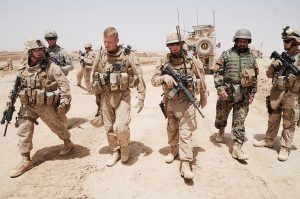
The same Times article reports that ISIS donors are also moving to push ISIS to take on the Taliban in Afghanistan, a development that will create even more bloodletting and chaos there. “Western officials” inform that “in recent months the [ISIS] core group delivered several hundred thousand dollars to the Afghan fighters helping them gain ground and recruits.” Yes, money like that would probably “help gain recruits” in Afghanistan where decades of US-funded wars have left that country in ruins, with many Afghans joining the flood of refugees fleeing to Europe. In fact, Afghanistan is now such a dangerous and inhospitable place to live that the entire “government” has chosen to live elsewhere. (16)
Who Is in Charge?
As US imperialism and its allies, along with France and Britain, are joining in the frenzy to bomb Syrian cities into rubble, it is important to come to grips with what is actually happening so as to begin to make a plan to stop this carnage.
Who is actually overseeing all this mad destruction? Who is really behind this plan to recruit armies of psychotic, psychopathic mercenaries whose job it is to take over and destroy entire nations? Why are these “private donors” and the autocratic regimes in the Gulf States able to organize genuine, terrorist jihadi armies without being punished by the US government? After all, young Muslim men in the US accused of the slightest connection with groups on the US “terrorist” list, face arrest and long prison terms.
Let’s Think a Minute
The Gulf monarchies – Qatar, Kuwait, Bahrain, and the United Arab Emirates, along with Saudi Arabia – are artificial political constructs totally beholden to imperialism for their creation and their very existence. The boundaries for each of them were established by the British imperialists after World War I. “Thus Britain – like France in her sphere of the Middle East … – established states, appointed persons to govern them, and drew frontiers between them … and did so mostly in and around 1922. As they had long intended to do, the European powers had taken the political destinies of the Middle Eastern peoples in their hands….” (17) The process also led to the creation of Iraq, Syria, Lebanon, Jordan, and – of course – the initial Zionist State of Israel
The US imperialists – like the British imperialists before them who carved out these authoritarian, theocratic fiefdoms on the Arabian peninsula – have always and continue to use these strategically-located, artificial “nation states” to advance their military, geopolitical, and economic interests in the region.
All of these regimes are family-run absolute monarchies and police states based on the same sharia law propagated by the jihadi “terrorists” they engender, applying stoning, beheading, lashing, and amputation as punishments. None of these regimes grants any rights to workers. In fact, the overwhelming majority of the populations of some of the Gulf emirates are foreign indentured servants from impoverished lands who have no rights. It is this labor force that has built the garish “modern” eye-popping projects these emirates are notorious for.
It is these monster regimes that are being used by US imperialism to fund the brutal jihadi armies that have been unleashed on the world.
The Dog Wags Its Tails
All of them survive – despite the enormous wealth the monarchies have amassed through the exploitation of the oil under the ground they were given – at the behest of their US imperialist handlers, even if they are allowed independent posturing from time to time. They all serve as imperialist military outposts and agents and are not independent agents at all.
Saudi Arabia: (population 28.7 million, 8 million of whom are not citizens)* The Saudi family monarchy has collaborated with British and US intelligence agencies since World War II to create and nurture the precursors of ISIS during the Cold War against “atheists and communists” and the Soviet Union. In fact, the current King Salmon is a veteran CIA agent and collaborator: As head of the Saudi intelligence agency, he helped the CIA recruit foreign mercenaries for “jihad” in the CIA’s “secret war” in Afghanistan in the 1970s and 80s, one of whom was Osama bin Laden. And – as stated above – the extreme, strict version of Islam that is espoused by ISIS and “al-Qa’ida” is a politicized version of the fundamentalist Wahhabi Islam – the religion of the Saudi family and the official state religion. By 2013, according to some sources, the Saudi monarchy had taken the leading role in supplying money and arms to jihadi groups fighting in Syria. (18)
Bahrain: (population 1.2 million, more than half are not citizens)* This small island is a US Navy base, the home of the US Naval Forces Central Command and the US Fifth Fleet.
Qatar: (population 1.8 million, 1.5 million of which are not citizens)* is home to a vital Pentagon facility: “the highly classified …Combined Air and Space Operations Center.” This Center
coordinated all of the attack and surveillance missions for the [US government’s] wars in Iraq and Afghanistan…It hosts liaison officers from 30 allies in Europe and the Persian Gulf … Inside this warehouse size command center, three giant digital maps [carry] tracking details of every aircraft – civilian and military – in the skies over three vital regions: Syria and its neighbors, the Persian Gulf and Afghanistan and beyond. Qatar is also the location of the massive and strategic Al Udeid US military base, central to the Pentagon’s wars against Afghanistan, Iraq, and Syria and from which it launches bombing missions against the region. (19)
United Arab Emirates: (population 9.2 million, 7.8 million of whom are not citizens.)* Along with the other monarchical states, the UAE has been “allowed” to build its own air force, joining bombing missions to serve US military goals in Libya and Syria. UAE pilots, trained by the US Air Force, actually fly US planes on bombing missions against Syria, Iraq, and other targets in the region. In fact, the secret US base at Al Dhafra is the only overseas base for the US government’s F-22 Raptor. (20)
The air forces of these monarchies, like the rest of their military forces, serve as extensions of the Pentagon and carry out the Pentagon’s policy directives. The UAE regime is planning the purchase of 30 F-16s to add to the 80 it already has. That is, there will be roughly one F-16 for every 12,600 UAE citizens! Like the other Gulf regimes – the UAE is a major Pentagon customer.
Kuwait: (4.1 million, 2.8 million of whom are not citizens) This tiny place on the Arab peninsula at the tip of Iraq was created in 1922 by the British to provide an imperialist port and military base on the Persian Gulf, and it has never been anything else. Today, “the US has at least 10 active military facilities in Kuwait, and Kuwait has been referred to by some analysts as the US government’s ‘unsinkable aircraft carrier.’” (21)
(Of the Gulf states, Yemen is the only one that does not have a US military base, and the US government – along with the other Arab monarchies – is now bombing Yemen to ruin. [22])
These entities, created to serve British imperialism, have now been taken over by the US imperialists. None of these so-called countries is independent. They are US military bases and outposts in the Gulf region.
And What Makes These Regimes Extra Special and Dangerous?
These autocratic artificial states provide amazing advantages for US imperialism. First, they are close to the countries that the US government wants to attack and lay waste. Second, these oil-rich regimes not only spend billions boosting US war industry profits but also provide skilled military personnel to assist US military operations. Third, and most important, they have virtual immunity from the class struggle because they have virtually no indigenous proletariat. The “expat” indentured workforce comprises nearly half – 43% – of the population of the GCC [Gulf Cooperation Council – Saudi Arabia, Kuwait, Qatar, Bahrain, the UAE, and Oman] in 2010. (23)
The conclusion is inescapable: These Gulf regimes created, funded, and armed the jihadi forces that are destroying Syria and Libya in order to promote Washington’s expansionist plans.
(Coincidently – also revealing whose hands are pulling the strings – after reviewing a recent ISIS internet recruitment video, a New York Times reporter observed that “Nowhere in the hour-long production – full of threats, drive-by shootings, explosions and gunfights – does an ISIS fighter mention the United States or directly mention or threaten Israel.”) (24)
“Let’s You and Him Fight”
Bourgeois cretin Donald Trump inadvertently articulated US imperialism’s policy in Asia and Africa: “Let them [the populations of these regions] fight each other and we [US imperialism] will pick up the remnants” (Sept. 18, 2015). He was offering this as his US foreign policy solution to the conflicts in Syria and the region. However, this already is US foreign policy. The only part that Trump had wrong was the word “Let.” The US policy is not to “let” them fight, but to create sectarian divisions and then recruit, pay, arm, and train “them” and then deploy “them” to create bloody havoc – to make people fight each other.
Where are the jihadists trained? While reporting on the facility in Jordan where a Jordanian soldier allegedly shot to death five US and one South African military contract workers, The New York Times quoted a retired Jordanian brigadier general who “said that the training center where the shooting erupted was a particularly sensitive site, having hosted thousands of foreign recruits since it opened in 2005.” (25) This base is one of many clandestine US government-funded training sites across the region and into Africa.
Who Are the Real Terrorists and What Are They Doing?
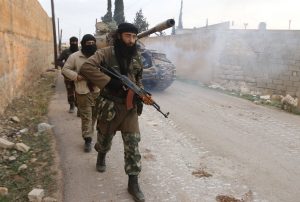
Al-Qa’ida was created by the CIA in collaboration with the Saudi regime and the government of Pakistan. (26)
The US government, working with the governments of Pakistan and Saudi Arabia, created the Taliban in the 1990s, recruiting, arming, and training students – taliban in Pushtu – from madrassas in Pakistan to send into Afghanistan to battle the armies of warlords.
These warlord armies themselves had been organized, armed, trained by the US government – along with the governments of Pakistan, Saudi Arabia and elsewhere – to fight alongside the jihadi armies of al-Qa’ida against the Soviets. The US government’s goal at that time was to destroy the nationalist government in Kabul that the Soviet army was defending against bloody attacks by retrograde and reactionary forces. These retrograde and reactionary forces who were resisting modernization, by the way, had also been incited, organized and funded by US imperialism. (27)
Today, US imperialism’s political and military client state Pakistan actually sheltered and continues to shelter hundreds of top Taliban leaders. These included the Taliban head Mullah Omar, who evidently died in a Pakistan hospital. His replacement Mullah Akhtar Muhammad Mansour, “has … benefited from a powerful alliance with the Pakistani military spy agency, Inter-Services Intelligence, the original sponsor of the Afghan Taliban insurgency.” This new Taliban leader owns homes in several cities in Pakistan, one of which is located in “an enclave where he and some other Taliban leaders … have built homes.” Moreover, he travels frequently to the UAE where he also owns a home and several businesses, including a cellphone company. (28)
The Pakistani military and the US drones have been allegedly attempting to destroy the “Haqqani Network” by relentless military and drone attacks for years killing hundreds of innocent people, destroying their homes and entire villages, and creating thousands of refugees in Waziristan – a mountainous region between Pakistan and Afghanistan. Meanwhile, the head of that “network,” Jalaluddin Haqqani, lived comfortably in Pakistan and had dual Pakistan and Saudi citizenship and may have even died in a hospital in Saudi Arabia. The Haqqani network is also a product of the US-Pakistani-Saudi collaboration to create jihadi armies in the 1980s. (29)
US military officials incited sectarian conflicts in Iraq after the US invasion and occupation in 2003, by organizing and training Shia death squads that rent the country apart.
And now it has, through its Gulf minions – created the jihadi armies of sectarian mercenaries who are destroying Syria, Libya and beyond: It was reported on November 25, 2015, that mercenaries from Colombia are being recruited through the UAE to fight in Yemen. (30)
Then, to allegedly destroy the very terrorist groups that it has created, the US government launches a “war on terror” that can never end, a perpetual orgy of violence squandering vast resources and tens of millions of lives.
That is the world that capitalism has wrought by 2015.
The obvious goal of this destructive policy is to redraw the map of the region. In addition, it is aimed not only at “regime change,” but at insuring that – perhaps – there is no regime at all. The working classes of the targeted nations will never have a chance to overthrow the ruling tyrants there because the working class will be dispersed and degraded. In the process, the remnants of the working class will become refugees, fleeing to Europe where they will be used to help the capitalists drive down the wages of all the workers and bust unions. The only powers that will be armed and “prepared to rule” the wretched remains of the targeted nation states will be gangs of mercenary lumpen, déclassé proletarians such as ISIS, who will have unlimited funding and support from imperialism and its agents.
In fact, John Bolton, a notorious defender of imperialism’s criminal behavior, welcomed such an option in an op-ed article in The New York Times. The destruction of Iraq and Syria should not be considered a problem at all, he maintained. The US government should simply establish a new Sunni state in the ruins, to pacify the region. (31)
What Is the US Government’s Response to the Real Supporters of Terrorism?
The US government is not issuing ultimata to these Gulf regimes demanding they stop supporting terrorism “or else.” It is not bombing the Gulf regimes “to defeat terrorists” like it bombs Libya, Iraq, Syria, or Yemen. It is not even calling for economic sanctions against these regimes like it does against Russia or Iran.
Instead, the US government is stepping up funding for and sending ever more weapons to these Gulf entities, strengthening their military might.
What the US government is doing is rewarding these regimes for their cooperation, just like these regimes pay the “jihadi” mercenaries.
Who Can Save the World From Chaos? Some Problems
The only power – today as ever – that can stop imperialist lunacy is the working class. However, because of the dire conditions US imperialism is creating in these foreign lands, the working class that must lead the way is the US working class. Unfortunately, the US working class has been virtually silent on the subject, hardly even defending itself from capitalist assaults on its unions.
Throughout the vicious wars imperialism has been waging – particularly since the attack on Iraq in 2003 – there has been no massive antiwar movement. Millions protested throughout the world and in the United States to try to prevent the US government from launching that 2003 offensive against the Iraqi people. However, these protests failed to prevent that attack. Since then, there has been virtual silence. This is true despite the fact that it is common knowledge that US government officials deliberately lied to justify that war and the multiple atrocities and crimes they have committed. Key known war criminals – such as George W. Bush, Donald Rumsfeld, Dick Cheney, and David Petraeus – write books, appear at public ceremonies, serve as “experts” on network TV, and live peaceful lives, in no way being held accountable.
The US working class has been “sold a bill of goods,” as the saying used to go: It has been cheated, hoodwinked, lied to, fooled again, except for the fact that the really damaging “goods” in this picture are being produced right here by the US working class itself.
One of the few sectors of the US capitalist economy that has been doing very well during the latest world capitalist crises has been the war industry. Congress last year approved a war budget of over $653 billion, according to the American Friends Service Committee. One reason Congress never says “No!” is because the key military contractors like Lockheed Martin engage in what is called “political engineering” to insure that the politicians will not vote “No.” This means that to produce one plane, say the white elephant F-35, Lockheed Martin spreads the work out through 1,400 contractors creating jobs in 46 states. Even though production of this plane should have been canceled long ago for many reasons, Lockheed Martin’s threat that this would “end jobs” helps justify repeated Congressional approval. (32)
Lockheed Martin is not alone. All the war industry giants use the same “political engineering” to insure that they receive huge government handouts. Certainly, the war industry does create jobs, many of them high-paying union jobs. Moreover, these jobs include not only the direct production of the bombers and the bombs, but of all the components used in the production process and all the weapons, uniforms, equipment, parts, and ammunition plus all the electronics used in every phase of attack.
Furthermore, Pentagon money is often welcomed by research departments in today’s underfunded universities, where our scientists misuse their expertise to develop and perfect ever-new weapons and instruments of war. Then, there are the transportation networks that rely on moving all the component parts to production plants and from the plants to the Pentagon or to the Pentagon’s customers. In addition, consider all the jobs that rely on the paychecks of the workers involved in everything listed above. We are talking about tens of millions of US jobs that rely on a thriving US imperialist war economy and the implementation of US imperialism’s plan to take over the entire globe and humanity’s resources.
How Must the Workers Organize to Stop This War Machine? What Is to Be Done?
How can we even begin to take on and shut down such an incredible behemoth that is actually being created by our own working class, by ourselves, here in the “belly of the beast?” It seems impossible! Yet it is not, and it must be done. What is required?
Public protests: First, of course, the working class and its allies across the nation must organize serious public demonstrations demanding that Washington stop funding jihadi armies, stop funding Arab terrorist monarchies, to stop funding Israel and stop the phony “War on Terror.”
However, to really stop all this, to really shut down the entire imperialist war industry requires much more than street protests. What must be done includes:
A thorough public investigation by the workers themselves: First, we need to conduct a complete national and international analysis of what is going on around us. This can only be done by the workers themselves taking on the task of investigating the role of their labor and their plant, industry, and community in the war machine.
A national network of collaboration: This will require that we establish a national organization and collaboration network. Workers on the job can then in a coordinated way form committees to investigate and report on what is being produced in their own plants and locales. Through this process, we will probably learn that the tentacles of this war machine penetrate into every pore of this society, encompassing entire industries, cities, towns, and communities. Workers may otherwise not even be aware – but often they must be! – of the role their labor plays in facilitating this gigantic machine of death and destruction.
A national conference: All of the above work must be directed toward making completely public and understandable what is now arcane and secret. The process will have to be facilitated by workers in some key industrialized and union-organized sectors – say, for example, the airline industry – calling a national conference to discuss the implementation of this process and related issues with the goal of maximizing the participation of workers from as many war-industry sites as possible so everyone involved can have a voice and participate.
Formulating a new national plan: The workers must then begin to formulate an alternative plan to build our economy anew, offering new jobs and using resources in ways that serve life and not death, human needs and not private profits.
While some industries will need to be completely eliminated, others may be converted relatively easily to useful and humane production. Where industries must be eliminated completely – such as those producing cluster bombs, for example – we will need to make sure that the workers whose livelihoods depend on such industries are able to live full and productive lives until the transformed economy provides better options.
Confiscation of the vast war profits of the “masters of war” and all their collaborators will be the first step toward achieving that last goal and many others.
The working-class revolution: The ruling class – these “masters of war” – of course, will not surrender and go home. Seeing this process through to completion will require that the working class take over the means of production and set up a new workers’ government, i.e., the proletarian revolution. Workers will also need to be able to defend ourselves and our gains from all the inevitable attacks from the capitalists and their state.
Genuine international solidarity: At the same time, we have the historic responsibility to help workers everywhere else make the working-class revolution in their countries and help those who have already become victims of US imperialist aggression to rebuild their economies.
And, indispensable to achieving all the above, of course, is the need for an organization to lead the way, a revolutionary party, which must also be built. This is the only way we can begin to “Stop the Bombing” and all the other US imperialist aggression that squander and ravage humanity and our resources.
Conclusion
This is not a matter of charity, pacifism or “good deeds.” It is a matter of survival. As Leon Trotsky put it simply in the Transitional Program for Socialist Revolution, “Under the menace of its own disintegration, the proletariat cannot permit the transformation of an increasing section of the workers into chronically unemployed paupers, living off the crumbs of a disintegrating society…” (33) This is the situation confronting us today. We are talking about the need for the working class to organize to take power. A socialist proletarian revolution is at the top of the agenda. As Trotsky, Rosa Luxemburg and other Marxists warned a century ago: Humanity faces a choice: It is either socialism or barbarism. Barbarism right now has the upper hand.
*
Note to readers: please click the share buttons above or below. Forward this article to your email lists. Crosspost on your blog site, internet forums. etc.
This article was originally published on Truthout.
Marilyn Vogt-Downey is a retired teacher of economics and foreign policy in a New York High School and UFT delegate, the translator of Mikhael Baitalsky’s Notebooks for the Grandchildren and works of Leon Trotsky. She was a frequent contributor to The Bulletin in Defense of Marxism, Socialist Action newspaper, and other socialist publications for many years and is currently a Co-Chair of the Moscow-based Committee for the Study of Leon Trotsky’s Legacy.
Notes
1. See Tomorrow’s Battlefield: US Proxy Wars and Secret Ops in Africa, Nick Turse, Haymarket Books, Chicago, 2015.
2. http://www.brookings.edu/research/papers/2013/12/06-private-gulf-financing-syria-extremist-rebels-sectarian-conflict-dickinson
3. Ibid. pp. 6-10.
4. Ibid. 1-2
5. Ibid. p. 6
6. Ibid. p. 9,
7. Ibid. p. 10
8. Ibid. p. 11
9. Ibid. p. 17
10. Ibid. p.21
11. http://foreignpolicy.com/2014/09/30/the-case-against-qatar/
12. http://www.theguardian.com/world/2013/mar/06/el-salvador-iraq-police-squads-washington
13. http://www.nytimes.com/2015/01/18/world/sunnis-in-iraq-are-kept-waiting-for-reforms-and-word-on-loved-ones.html?_r=0
14. truthout.org/speakout/item/21046-is-the-us-government-behind-the-carnage-in-iraq
15. http://www.nytimes.com/2015/11/29/world/middleeast/isis-grip-on-libyan-city-gives-it-a-fallback-option.html
16. http://www.nytimes.com/2015/11/24/world/asia/afghan-leaders-try-to-halt-exodus-but-pleas-ring-hollow.html
17. A Peace to End All Peace, David Fromkin, Avon Books, NY, 1989, p. 560
18. http://www.reuters.com/article/2013/05/31/us-syria-crisis-saudi-insight-idUSBRE94U0ZV20130531#OPhPjHwsaTOYf3MQ.97
19. http://www.nytimes.com/2013/12/12/world/middleeast/hagel-lifts-veil-on-major-military-center-in-qatar.html
20. http://linkis.com/washingtonpost.com/In_the_UAE_the_Unite.html
21. Globalsecurity.org
22. http://www.aljazeera.com/indepth/interactive/2012/04/2012417131242767298.html
23. http://sss.migrationpolicy,org/article/labor-migration-united-arab-emirates -challenges-and-responses)
24. “ISIS Commands Media, Boasting of Statecraft and Killing,” The New York Times, August 31, 2014.
25. http://www.nytimes.com/2015/11/11/world/middleeast/rampage-by-a-soldier-known-for-loyalty-shakes-jordan-and-a-family.html
26. Robert Dreyfus, The Devil’s Game, Henry Holt and Company, NY, 2005.
27. Gerard Chaliand, Report From Afghanistan, Viking Press, NY, 1982.
28. http://www.nytimes.com/2015/10/05/world/asia/kunduz-fall-validates-mullah-akhtar-muhammad-mansour-talibans-newleader.htmlown
29. http://www.nytimes.com/2015/08/01/world/asia/founder-of-haqqani-network-died-nearly-a-year-ago-member-says.html
30. http://www.nytimes.com/2015/11/26/world/middleeast/emirates-secretly-sends-colombian-mercenaries-to-fight-in-yemen.html
31. “To Defeat ISIS, Create a Sunni State,” Op Ed, The New York Times, November 24, 2015.
32. “The F-35’s History of Costly Problems,” NPR, September 29, 2013.
33. Leon Trotsky, The Transitional Program For Socialist Revolution, Pathfinder Press, 1983, p. 116.
*Population data for the Gulf States was taken from their respective entries in Wikipedia.
 by Michel Chossudovsky
by Michel Chossudovsky- ISBN Number: 9780973714715
- List Price: $24.95
- click here to order
Special Price: $18.00
In this new and expanded edition of Michel Chossudovsky’s 2002 best seller, the author blows away the smokescreen put up by the mainstream media, that 9/11 was an attack on America by “Islamic terrorists”. Through meticulous research, the author uncovers a military-intelligence ploy behind the September 11 attacks, and the cover-up and complicity of key members of the Bush Administration.
The expanded edition, which includes twelve new chapters focuses on the use of 9/11 as a pretext for the invasion and illegal occupation of Iraq, the militarisation of justice and law enforcement and the repeal of democracy.
According to Chossudovsky, the “war on terrorism” is a complete fabrication based on the illusion that one man, Osama bin Laden, outwitted the $40 billion-a-year American intelligence apparatus. The “war on terrorism” is a war of conquest. Globalisation is the final march to the “New World Order”, dominated by Wall Street and the U.S. military-industrial complex.
September 11, 2001 provides a justification for waging a war without borders. Washington’s agenda consists in extending the frontiers of the American Empire to facilitate complete U.S. corporate control, while installing within America the institutions of the Homeland Security State.



